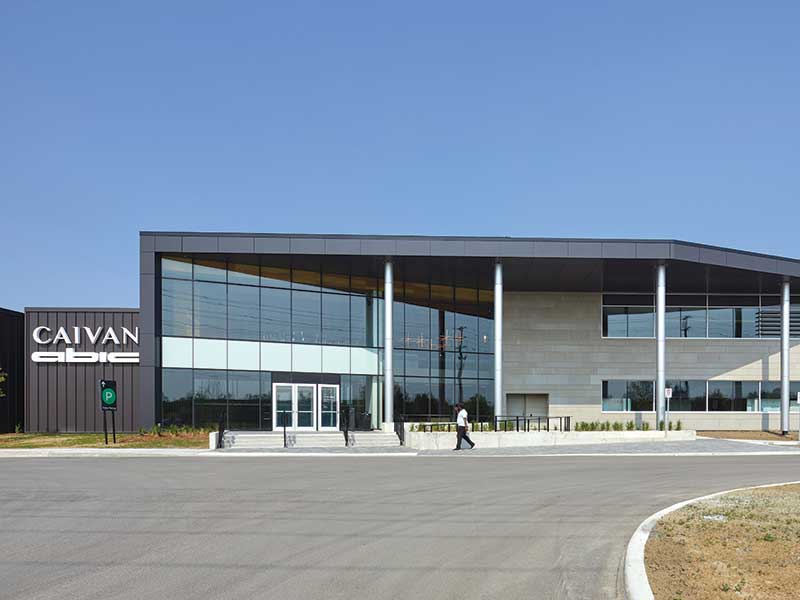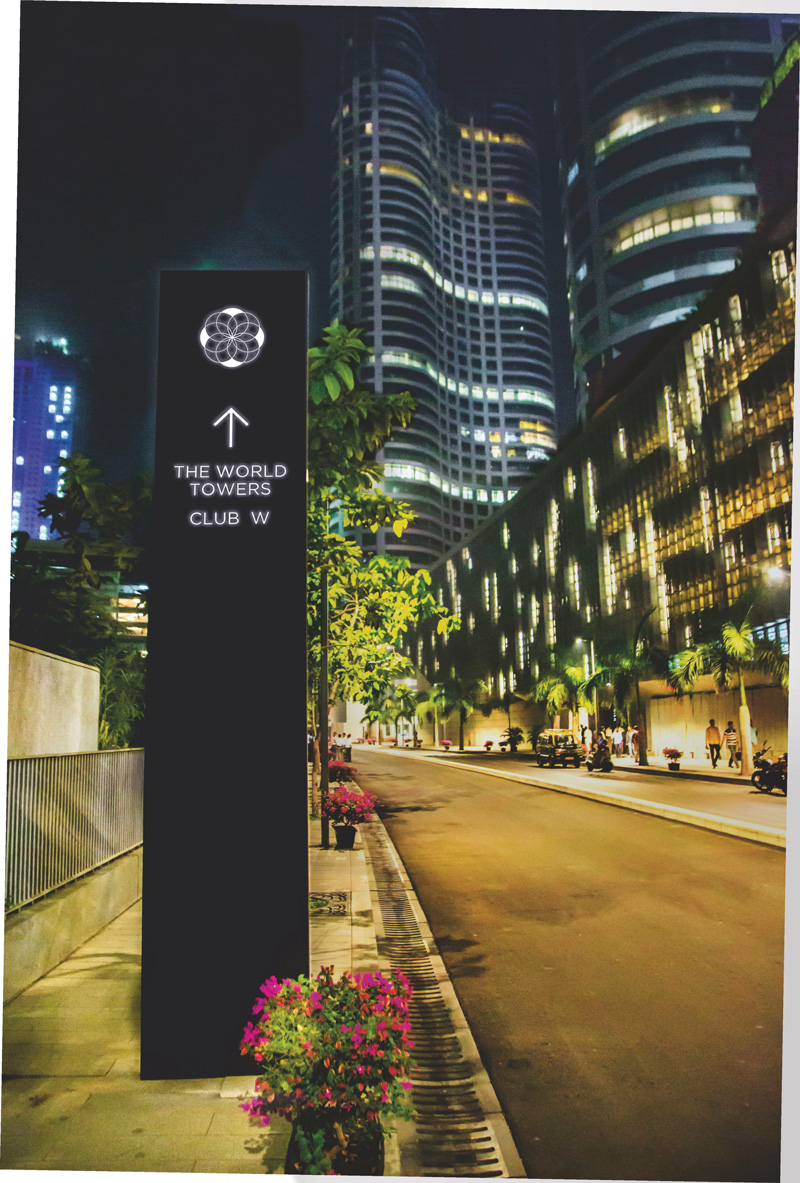
How important is signage in a location or building?
Wayfinding and signage systems ease navigation, enhances one’s understanding of the physical environment, and lend a unique identity to a place, which seamlessly integrates with the environment. Due to the scale and complexity of the projects today, navigation has become complicated; being lost in a complex building gives an unpleasant experience. The inclusion of navigational systems helps users find their way and brings clarity to chaos. It creates a strong sense of place and communicates the built narrative, thereby fostering strong conversations between the person and the space.
Today, there is an increasing number of complicated spaces like shopping malls, townships and multi-terminal airports - all of which require good navigational systems. Effective and appropriate wayfinding design solutions highlight the statement made by a campus, precinct or a building, and strengthen its presence. They play a crucial role in translating the spaces to the users as they exhibit meaning, form, function, and purpose.
What is the thought process involved in signage planning and design?
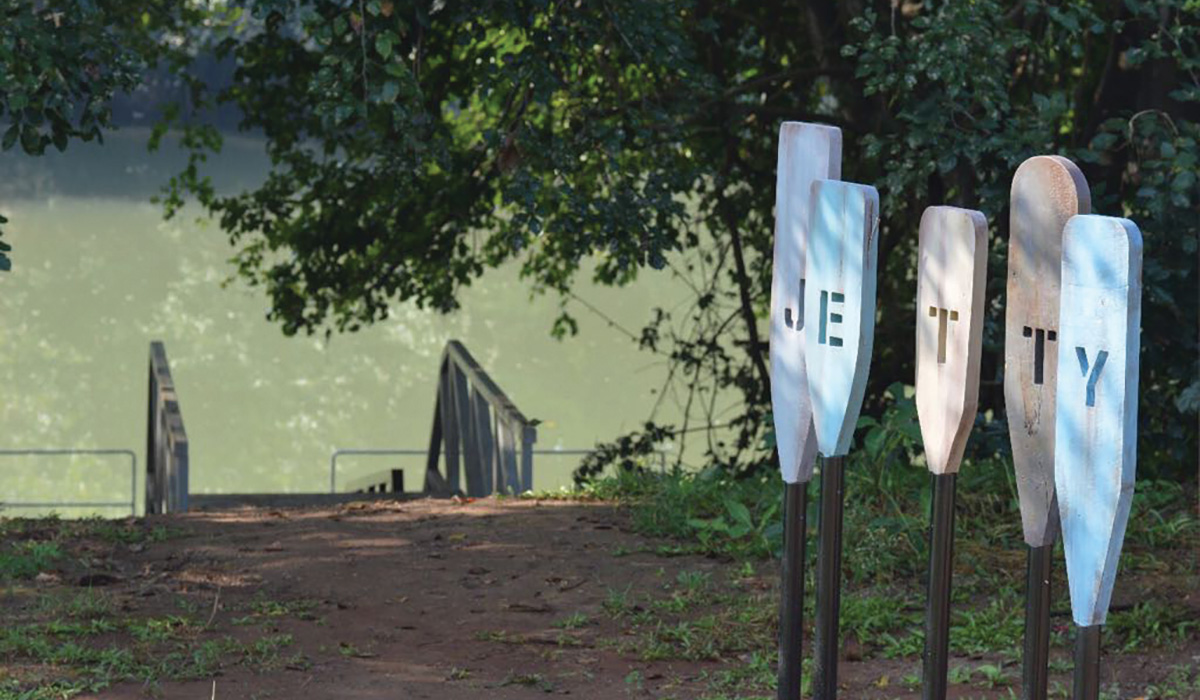 Lodha Belmondo
Lodha BelmondoA good wayfinding strategy is about delivering a better experience to users by aiding navigation in a simple and effective manner. Designing a comprehensive wayfinding program is a holistic process, which involves a number of sub-processes to achieve a design solution. It is a confluence of design sensibilities that are user-focussed with combined technical knowledge and innovation. The process includes studying the location’s architectural drawings, surveying site to understand operational requirements, analyzing movement patterns and user behaviour, schematic mapping and developing a signage masterplan.
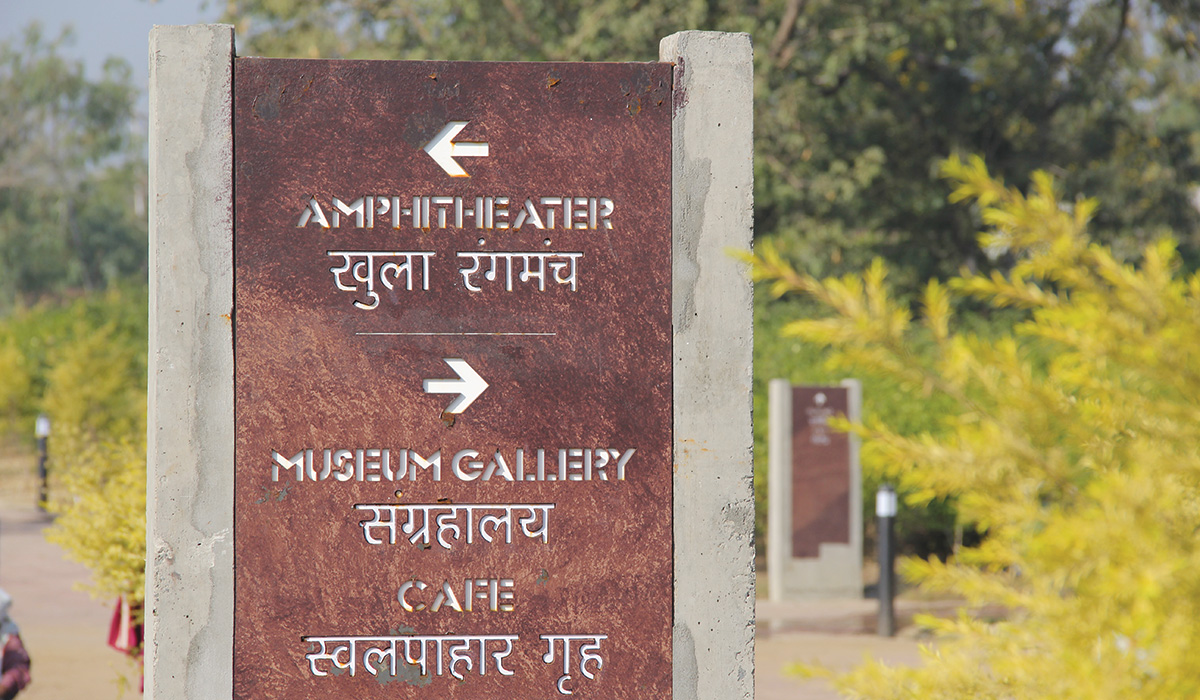 Shaurya Smarak
Shaurya SmarakA strategy is conceived based on the gathered insights, for maximum ease and efficiency. The various design intensions, their visual interpretations are then explored, which form the preliminary idea expressions. On approval of the concept ideas, schematic designs with study models are developed and then worked on in detail to give the final design scheme. The design mockups and prototypes are studied to assess the final outcome and refined further, if required. These final drawings are given for fabrication following which, the finished signs are ready for installation at the locations.
A good wayfinding strategy is about delivering a better experience to users by aiding navigation in a simple and effective manner
Baarish Vasant Date - Graphics Beyond
How would you address the challenge of clutter, especially in a large commercial complex, with numerous signage vying for attention?
Making signs visible and legible from the clutter of competing messages and stimuli all vying for attention is extremely challenging. By encountering a chaos of signs, people are already in a state of sensory overload, where they are exposed to far more information than they can process, resulting in no attention or less attention to any particular sign.
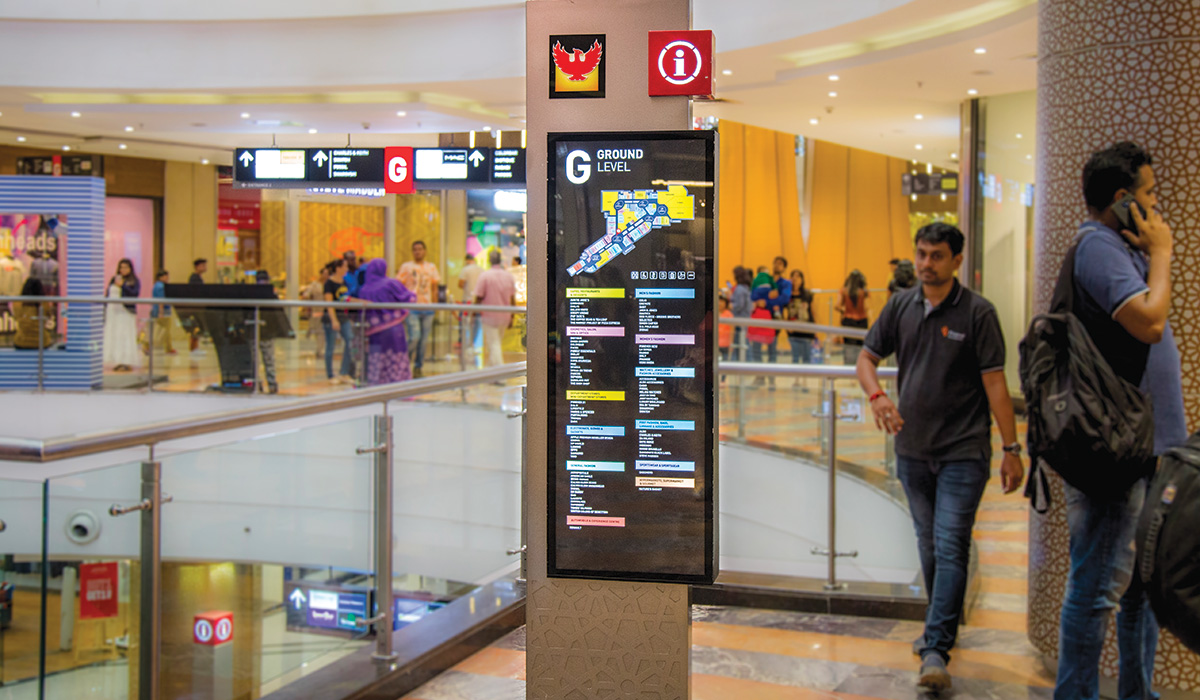 Phoenix Market City
Phoenix Market CityA thoughtful design can help make a sign stand out against a clutter of signs. A sign could be made visible and attractive by applying various design strategies like appropriate use of size, font, contrast, optimum information, strategic location, and proper illumination. This would ensure and create attractive, highly appealing signage that is readable, appealing to the eye, and carries the most impact.

